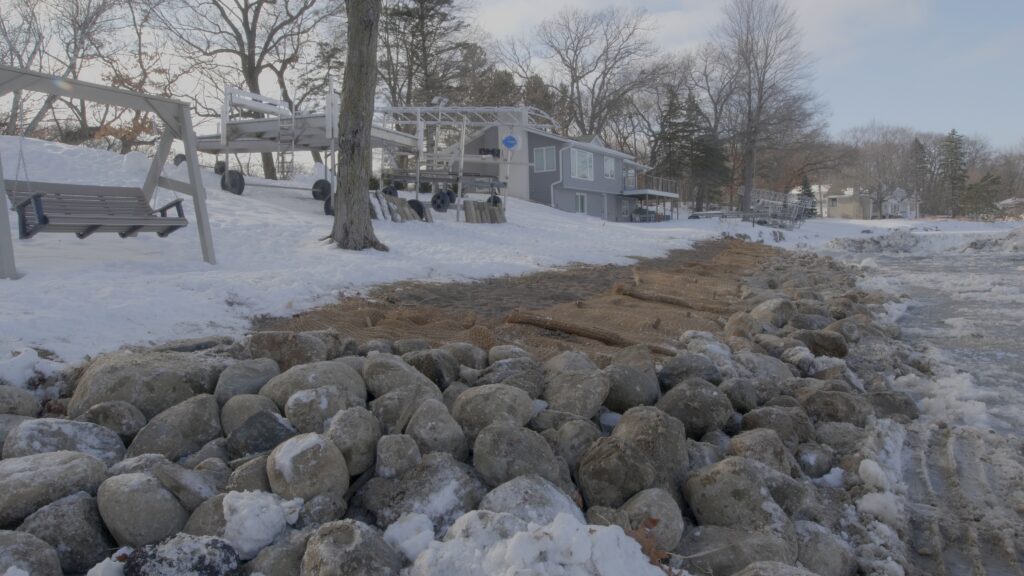Rock riprap has been used in shoreline restoration for many years, with varying levels of success. In many cases, its use is both practical and effective. Specifically, riprap can be applied for toe protection along lake and stream banks, as ballast to support bioengineering projects, and in the construction of habitat structures such as rock vanes, riffles, fish weirs and passages, among others.

On lakeshores, riprap is a commonly used technique for stabilizing shorelines against erosive forces such as runoff, ice pressure, and wave action. While there are instances where riprap is an appropriate solution, its overuse has been a concern, with many lakes having seen excessive application of this method over time. In some cases, the use of riprap may appear excessive, and it is important to consider alternatives. Riprap looks unnatural in most applications, unless you’re installing it on a lake shore that is already rocky (in which case it likely isn’t necessary). However, there are strategies to mitigate its negative visual and ecological impacts. These include the use of vegetated riprap, willow staking, and the incorporation of shoreline or emergent plantings, as well as native buffer plantings that gradually extend toward the water’s edge.

While rock riprap remains a viable tool in ecological restoration, it is important to consider its proper application. When used appropriately, rock riprap can contribute to positive ecological outcomes and support the long-term stability of a shoreline, but it certainly isn’t the best or the only method for stabilization.


